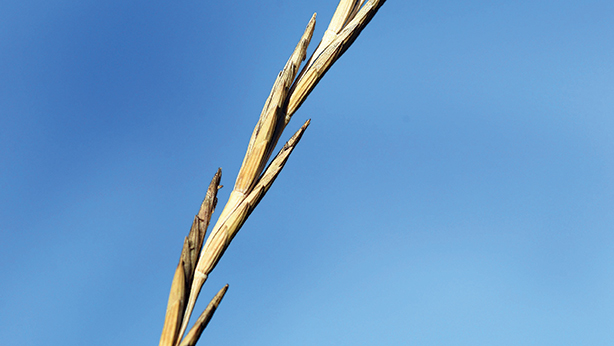Perennial wheatgrass shows promise despite low yields
 © Cott Takushi/Pioneer Press via AP
© Cott Takushi/Pioneer Press via AP A perennial intermediate wheatgrass, Kernza, could be an effective crop to mop up nutrients and improve soil health, according to Niab’s head of breeding Dr Phil Howell.
Phil has been trialling Kernza for the past three years at Niab’s experimental farm near Cambridge, after obtaining seed from US-based non-profit, The Land Institute.
“They sent me five varieties of a seed that looks like grass seed on steroids. We planted it conventionally at the end of October, and the first harvest, we combined about 80kg/ha.
“That was without any added nitrogen. It was so low I had to check my calculation,” Phil said.
See also: Notts Monitor Farm sees benefits of reduced cultivations
“But you don’t need to reseed it. We left the stubble quite long, almost 90cm. It looks like dead grass at that point, but you could already see new grass starting to grow from the base.
“Then, in March or April, it suddenly wakes up and came through elongation and had really quite big heads.”
That translated, in the second year, to a yield of about 1t/ha. In the US, the crop is grazed as forage in the winter, while the grains can be milled or even used for brewing.
“In bread, it has this phenomenal cinnamon taste,” Phil said.
But its real benefit is below ground. “It has a fantastic deep vigorous root system, which has the potential to stabilise soil structure and capture carbon. I could also see it being used in buffer strips next to watercourses to mop up leached nutrients,” he suggested.
“It’s going to be grown for the other things it can do, rather than for yield.”

